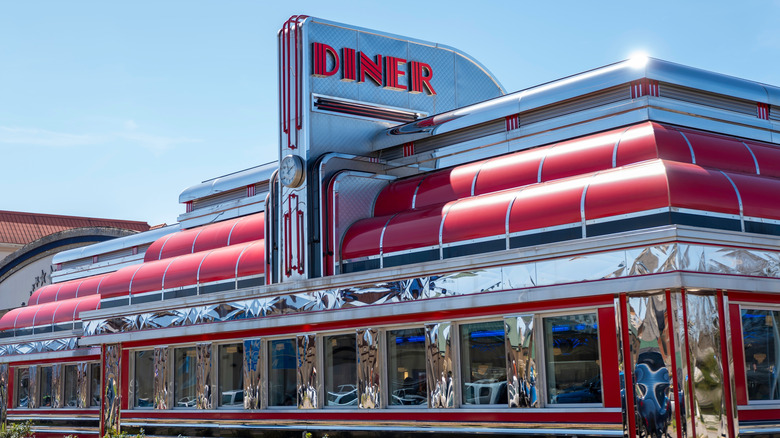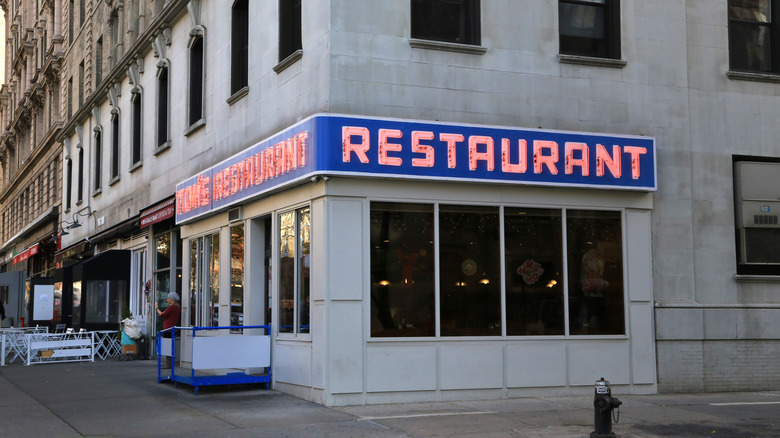Here's What Really Makes A Restaurant A Diner
Diners are there for you when you need them most. A neon sign glowing on the side of the highway late at night. The sun reflecting off the mid-century chrome shells early in the morning. Inside, there's always a trusty counter with spinning stools, a jukebox in the corner, and booths lining the walls with your hot cup of coffee and a warm meal not far ahead. Those classic appeals are what set diners apart from other restaurants.
Diners got their start in the late 1800s in Providence, Rhode Island, with a horse-drawn wagon selling coffee and sandwiches to late-night workers who were hungry after their shifts. By the 1920s, diners were prefabricated in factories and modeled after railroad dining cars, giving these all-hours spots their signature look. Before long, the iconic streamliner shape, seen at Maine's oldest diner, became the sign people looked for when hunger hit. The food was affordable, hot, and quick, and the establishments became the precursor to America's first fast food restaurants.
The diner DNA is behind quick-cooked food served fast and cheap, where you could get a familiar meal at almost any time of the day. Fast food spots set themselves apart with a drive-thru for speed, but diner-style chains like Waffle House and Denny's hold onto 24-hour sit-down service and that vintage vibe.
The diner in American culture
Slide into a booth, and you'll have a cup of water and a coffee in no time. The thick coffee mug is a diner ritual, with continuous top-offs as you sip. Typically, with a small cooking staff, you can see your eggs hit the grill, smell the bacon under the press, and hear the burgers as they sizzle. Over the years, diner menus have expanded to include "blue plate" specials with hearty main dishes like meatloaf or fried chicken with a few sides like mashed potatoes and various veggies. Even if you're not starving and just looking for a light bite, a slice of pie and a cup of coffee are some common go-tos.
It's easy to picture diners and their place in American culture thanks to shows like "Seinfeld," where four New York City pals gathered in a booth at Tom's Restaurant, or the famous scene from "Pulp Fiction," where John Travolta and Samuel L. Jackson land themselves in a stick-up. The diner is even ingrained in the American art scene thanks to Edward Hopper's "Nighthawks," which portrays four people in a late-night scene in the diner's glow. France has its cafés, Britain has its pubs, and America has its diners — places where anyone can take a load off and fuel up.

